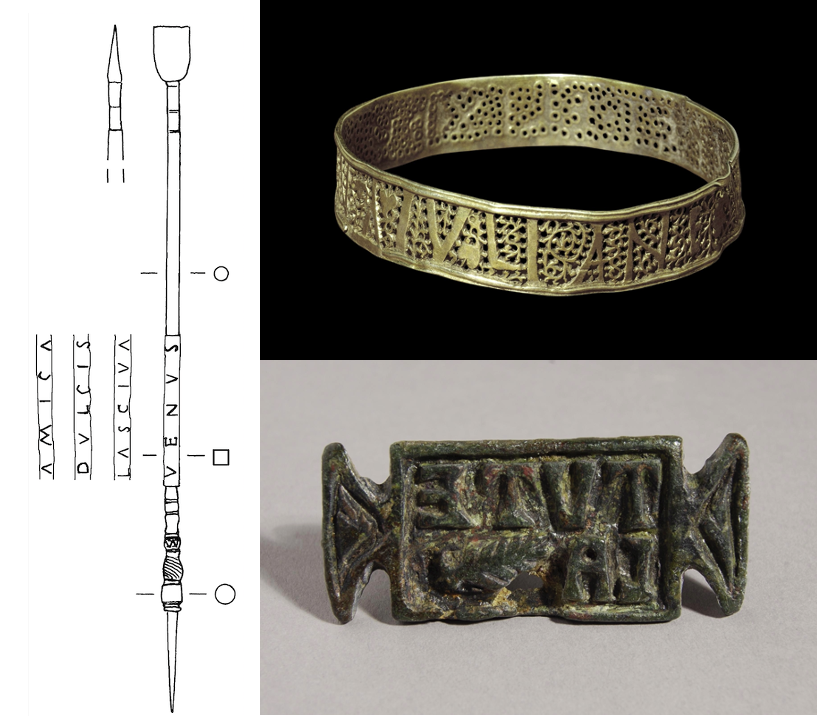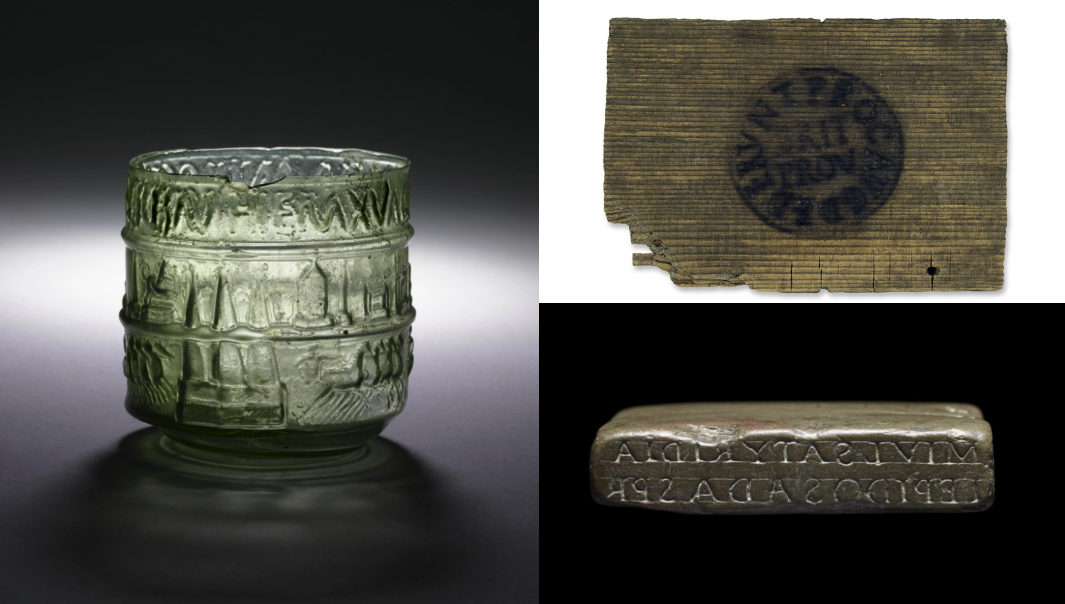by Anna Willi

LatinNow is an interdisciplinary project, which means that we take a holistic approach to epigraphy. We think it is essential to look beyond the text and consider the inscribed object along with it: without it, an inscription can lose not only its sense but also its visual and physical impact. We try to follow this approach when working on our epigraphic dataset as much as possible, but we have had to accept that it can sometimes conflict with the more traditional epigraphic categories that were established, often during the 19th century, with a focus on monumental and mostly lapidary inscriptions. Older epigraphic editions often make no mention of the inscribed monument at all, or only in a very vague manner; epigraphers only saw the texts as their remit, and since research at the time was focused on political and institutional history, lapidary inscriptions were considered to be of particular interest. One epigraphic category in particular has suffered from such pronounced priorities, that of inscribed instrumentum, or instrumentum domesticum, as it is often called – with significant consequences for Digital Epigraphy.
The term instrumentum requires some explanation. The Latin word first of all means ‘tool’, but it can be used as a collective term, a singular for plural, to describe ‘equipment’ more generally. Instrumentum domesticum can thus be understood to encompass all kinds of utensils, tools, and smaller objects that are used in a domestic environment. However, while in some languages, such as French, instrumentum can be used for small finds in general, including the uninscribed, it is mainly used as an epigraphic category in English, to describe stamps, graffiti and other texts found on small finds. To the epigrapher trained on monumental stone inscriptions, which is still how epigraphy is usually taught, the vast range of objects, materials, text types and execution techniques involved can be confusing at first: to understand them, some knowledge about the inscribed objects themselves is required, and small finds archaeology is itself a specialized skill.
The Corpus Inscriptionum Latinarum provided one of the earliest systematic approaches to inscribed small finds, by dedicating specific sections entitled ‘instrumentum’ or ‘instrumentum domesticum’ to them (e.g. CIL I.2 1491–1499, CIL XII section XXIII), and then with CIL XV a whole volume (Rome). They contain inscriptions on portable objects such as bricks, tiles, vessels made of ceramic and glass, lamps, metal ingots, finger-rings, and various objects made of silver or bronze. Over time, however, the term has become more and more vague and its use more and more inclusive, with the most comprehensive approach perhaps being that of Roman Inscriptions in Britain vol. II: under the title ‘Instrumentum domesticum (personal belongings and the like)’ it also includes non-monumental inscriptions on non-portable support such as wall graffiti and mosaic inscriptions. Based on the fact that numerically the vast majority of inscriptions on small finds are related to production and commerce, attempts have been made to claim the term instrumentum solely for the epigraphy of production and economy, but in reality, makers’ marks, religious dedications, declarations of love and accounting notes have all found a home in the instrumentum category. It has become a catch-all for all the ‘small stuff’.

Because of its diverse nature, inscribed instrumentum is often neglected and under-published, in turn making it difficult for researchers to include this material in projects and studies as it often involves painstakingly searching e.g. AE and CIL. This neglect stands in stark contrast with the potential of inscribed small finds for numerous research questions, as demonstrated by the work made possible thanks to the herculean effort of recording and digitizing of stamps on Gaulish terra sigillata (https://rgzm.github.io/samian-lod/). We want to be able to study the distribution of the goods from a specific workshop, for example, or the production process in workshops of different sizes, or the social status of those involved in certain branches of production and commerce, which can be studied through onomastics. We might use this evidence to think about levels and types of literacy in different social contexts. Non-monumental inscriptions can give us a peek beyond the ostentatious and often ambitious sphere of stone inscriptions, which are frequently related to the higher echelons of society and have the distinctive purpose of displaying something to a wide audience or the public. Instrumentum allows us to see the same part of society expressing themselves in a more intimate way and environment, and even more often it tells us about those parts of society that are less likely to feature in stone inscriptions, such as those involved in production and trade, or those living in more rural areas. I’m currently working with Michel Feugère, French small finds expert, to think through some of these issues via the inscribed examples on his Artefacts database.
Inscribed small finds have received more attention over the past decades, amongst other things because of an increased interest in the material aspects of literacy, and efforts have been made to pull them into the spotlight, e.g. through the publication of the Instrumenta inscripta volumes. But with Epigraphy moving on from a focus on stone inscriptions to including more diverse categories, and from producing print corpora to putting digital tools to use, the old category of instrumentum has produced its own set of challenges, and projects striving to make it more accessible online are taking them on, including our own.
A particular challenge for Digital Epigraphy is the categorization of inscriptions in a way that works across different projects and datasets, and bringing together existing datasets, and the FAIR Epigraphy project led by Marietta Horster and Jonathan Prag and the ongoing efforts of epigraphy.info are tackling exactly this problem. But as far as instrumentum is concerned, the sheer number of diverse object- and text-types involved means that the researchers populating the existing databases often lacked the terminology (or the inclination) to take care over its classification. Accordingly, instrumentum can be found as a category of objects in many databases, rendering it impossible to, for example, search for stamped plates or inscribed spoons, and leaving us with a huge job to do.

In a print edition it can be difficult to do justice to both the archaeological and textual nature of inscribed instrumentum – a decision has to be made how to structure the publication, according to object type or text type, for example, and for each inscription, a decision has to be made as to which category it belongs to. Digital editions are not bound to such linear structure and there is theoretically no limit to what can be encoded, for example in EpiDoc. But we need to put in the effort and avoid catch-all categories such as instrumentum. Digital Epigraphy means that we have tools to manage much more copious and detailed information than is the case with the index of a print edition, and that we can combine the existing criteria in innumerable ways when searching databases and exporting datasets from them. We should make use of this opportunity.